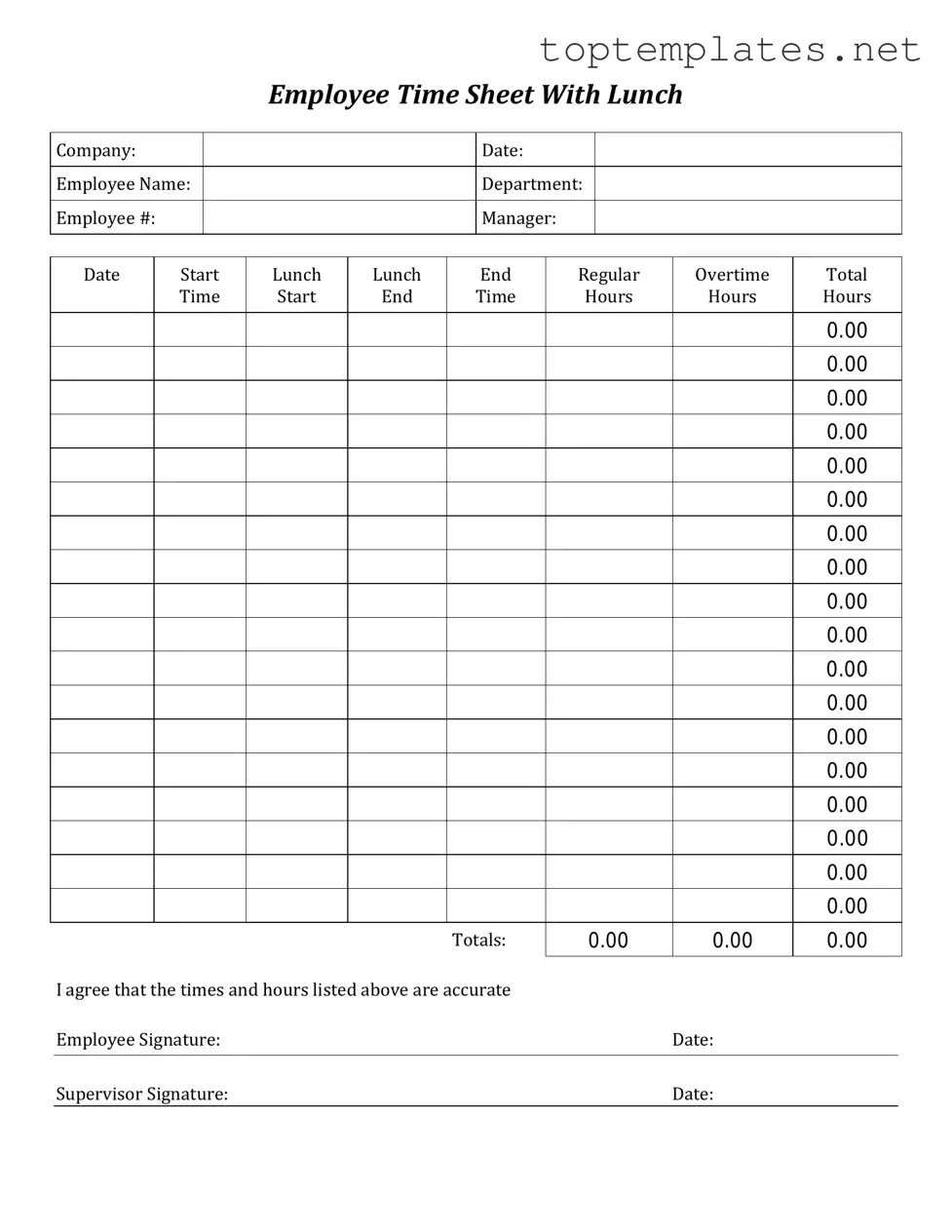What is a Time Card form?
A Time Card form is a document used by employees to record the number of hours they have worked during a specific period. It serves as a basis for calculating wages, ensuring accuracy in payroll, and maintaining compliance with labor laws. This form can be either digital or physical and typically includes information such as dates, hours worked, and sometimes, job duties performed.
How often should the Time Card form be submitted?
Submission frequency for a Time Card form usually aligns with the payroll schedule of the organization. Common practices include weekly, bi-weekly, or monthly submissions. It’s important for employees to adhere to this schedule to ensure timely and correct payment for their services.
What information is required on a Time Card form?
Essential information on a Time Card form includes the employee's name, identification number (if applicable), the period of reporting, daily hours worked, and total hours for the pay period. Some forms might also require a breakdown of regular hours, overtime hours, and any leave or absence periods.
Are there any consequences for submitting a Time Card form late?
Submitting a Time Card form late can delay the processing of payroll, potentially resulting in delayed wages. Additionally, consistent late submissions might lead to disciplinary action, depending on company policy. It's crucial for employees to submit their time cards according to the established schedule.
Can corrections be made to a Time Card form after submission?
Yes, corrections can usually be made to a Time Card form after submission, but the process depends on the employer's policies. Typically, employees need to notify their supervisor or the payroll department of any errors as soon as possible and provide the corrected information in writing.
Is it mandatory to use a Time Card form?
While not all employers require a Time Card form, it is a common and effective method for tracking hours worked, especially for hourly employees. Federal and state labor laws may mandate accurate record-keeping of working hours, making such forms crucial for compliance purposes.
What happens if there are discrepancies in the Time Card form?
If discrepancies arise in a Time Card form, it is typically addressed by the payroll or HR department, which may request additional information or clarification from the employee. It’s important to resolve these discrepancies promptly to ensure the accurate processing of wages.
Who can access the information on a Time Card form?
Access to the information on a Time Card form is usually restricted to individuals within an organization who are responsible for processing payroll, managing HR responsibilities, or overseeing work hours and compliance. Confidentiality protocols are in place to protect employee privacy and data security.

